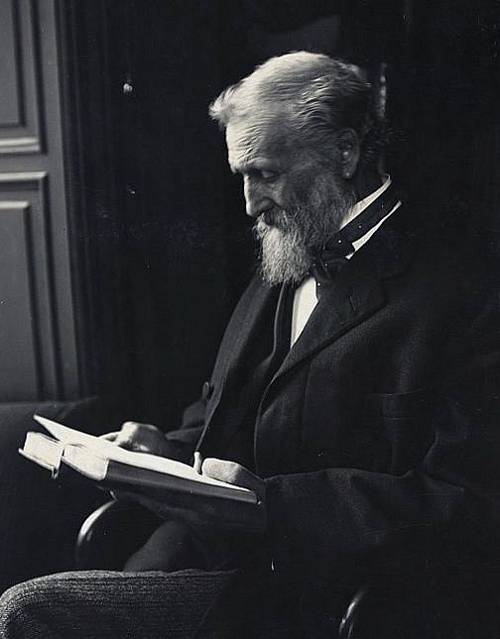
FAQ About John Muir

Who was John Muir?
John Muir was a Scottish-American naturalist, author, and early advocate for the preservation of wilderness in the United States. He is often referred to as the "Father of the National Parks" due to his influential role in the establishment of several national parks, including Yosemite and Sequoia National Parks.

What is John Muir most famous for?
John Muir is most famous for his contributions to the national parks movement and his role in the preservation of vast wilderness areas in the United States. His writings and activism were instrumental in the creation of national parks like Yosemite, Sequoia, and Mount Rainier. He helped shape the consciousness of the public and policymakers towards conservation.

When was John Muir born?
John Muir was born on April 21, 1838, in Dunbar, Scotland. He later emigrated to the United States with his family in 1849.

What were some of John Muir's contributions to conservation?
John Muir's contributions to conservation include the founding of the Sierra Club, a prominent environmental organization, and his effective advocacy for the establishment of national parks. His writings and personal campaigns against deforestation and the exploitation of natural resources raised public awareness and inspired a broader conservation movement.

Why is John Muir called the "Father of the National Parks"?
John Muir is called the "Father of the National Parks" because of his profound influence on the development and expansion of the United States National Parks system. His passionate advocacy for the preservation of wilderness areas, through writings and lobbying efforts, directly led to the establishment of protected areas like Yosemite and Sequoia National Parks.

What books did John Muir write?
John Muir wrote several influential books, including "The Mountains of California," "Our National Parks," and "My First Summer in the Sierra." His works reflect his deep appreciation for nature and played a significant role in promoting environmental conservation.

How did John Muir influence Theodore Roosevelt?
John Muir influenced Theodore Roosevelt by taking him on a famous camping trip in 1903 to Yosemite. This experience deeply impacted Roosevelt, who subsequently embraced and promoted conservation policies, leading to the doubling of national parks and the creation of national monuments, sanctuaries, and wildlife refuges during his presidency.

What was John Muir's relationship with the Sierra Club?
John Muir founded the Sierra Club in 1892 and served as its first president until his death in 1914. The organization was established to promote the conservation of the natural environment, and under Muir's leadership, it became a key player in the efforts to protect wilderness areas in the United States.

Which national parks did John Muir help establish?
John Muir was instrumental in the establishment of several national parks, including Yosemite, Sequoia, Mount Rainier, and the Grand Canyon National Parks. His advocacy and writings helped garner public and governmental support to preserve these natural treasures.

How did John Muir's upbringing influence his work?
John Muir's upbringing in Scotland and later Wisconsin exposed him to nature from a young age, sparking a lifelong fascination with the natural world. His rigorous religious upbringing also instilled a sense of duty to protect God's creations, which influenced his conservation work and philosophy.

What is the legacy of John Muir today?
The legacy of John Muir today is seen in the continued conservation efforts by organizations he inspired, such as the Sierra Club, and the ongoing preservation and enjoyment of national parks he helped establish. His writings still serve as an inspiration for conservationists and nature lovers worldwide.

What are some lesser-known facts about John Muir?
Some lesser-known facts about John Muir include his mechanical inventions in his youth, such as a "clockwork desk" that helped him with studies. Additionally, he deeply studied botany and geology, which informed much of his later work in naturalism and conservation.

How did John Muir die?
John Muir died on December 24, 1914, in Los Angeles, California, due to pneumonia. His death marked the end of a significant chapter in the American conservation movement, but his influence persists through the ongoing work of organizations and advocates inspired by his legacy.

What impact did John Muir have on American conservation policy?
John Muir had a significant impact on American conservation policy by advocating for the preservation of wilderness areas, influencing legislation that protected such areas through the establishment of national parks and forests. His efforts helped to lay the groundwork for the modern conservation movement and policies aimed at preserving natural landscapes.

Did John Muir have any formal scientific training?
John Muir did not have formal scientific training; however, he was a self-taught naturalist with an extensive personal study of botany, geology, and the natural sciences. His observations and writings are rooted in his first-hand experiences and keen insights into the natural environment.

How did John Muir contribute to environmental literature?
John Muir contributed to environmental literature through his eloquent writings that captured the beauty and importance of the natural world. His works, like "The Yosemite" and "Travels in Alaska," combined vivid descriptions with passionate appeals for conservation, influencing both public perception and government policy towards the environment.

What challenges did John Muir face in his conservation efforts?
John Muir faced several challenges in his conservation efforts, including opposition from logging, mining, and grazing interests that sought to exploit natural resources. Additionally, during his lifetime, conservation was not a widely accepted concept, requiring persistent advocacy and public education to gain support.

How did John Muir's work influence modern environmentalism?
John Muir's work laid the foundation for modern environmentalism by emphasizing the intrinsic value of nature and the need to protect it for future generations. His advocacy helped establish a framework and ethic that inform contemporary conservation efforts and environmental policies worldwide.

What was John Muir's philosophy on nature?
John Muir's philosophy on nature was centered around the belief that nature was a source of spiritual renewal, beauty, and intrinsic value beyond human utility. He saw the preservation of wilderness areas as essential to maintaining the human connection to the natural world and advocated for their protection from industrialization and exploitation.

What places are named after John Muir?
Several places are named after John Muir, reflecting his impact and legacy. These include the John Muir Trail, a long-distance hiking path in the Sierra Nevada; the Muir Woods National Monument in California; and the John Muir Wilderness, also in California. These sites continue to honor his contributions to nature and conservation.
